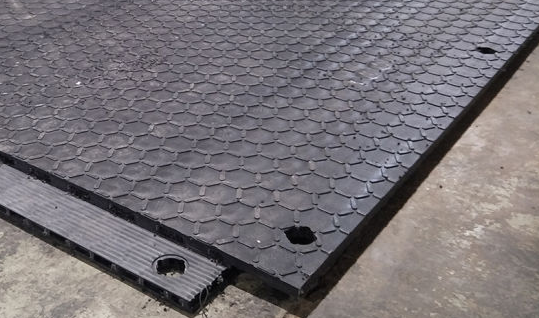In an era where environmental consciousness is at the forefront of discussions, industries, and construction sites are reevaluating their practices to align with sustainable principles.
Ground protection mats have emerged as a robust solution, providing heavy-duty support while minimizing environmental impact.
This article explores the eco-friendly aspects of heavy-duty ground protection mats and their role in promoting sustainable sites.
The Need for Ground Protection
Construction sites, outdoor events, and industrial activities often face challenges associated with ground protection. Machinery and foot traffic can lead to soil erosion, compaction and degradation of natural landscape.
Traditional solutions, like gravel or wooden planks, not only fail in terms of effectiveness but can contribute to deforestation and resource deterioration.
Heavy-Duty Ground Protection Mats: An Overview
Heavy-duty ground protection mats are engineered to meet the challenges presented by heavy machinery and equipment, including hydraulic presses.
These mats are typically constructed out of high-density polyethylene (HDPE), an environmentally-friendly and recyclable material capable of withstanding construction vehicles’ weight and impact while simultaneously safeguarding underlying surfaces.
Eco-Friendly Material Choices
Choosing eco-friendly materials is essential for minimizing the environmental impact of construction projects.
Reusing and recycling materials such as high-density polyethylene (HDPE), not only ensure durability and functionality but also align with principles of sustainability in construction industry.
Recyclable HDPE
Heavy-duty ground protection mats are commonly crafted from recyclable HDPE, a thermoplastic known for its strength and durability. Choosing HDPE mats contributes to a circular economy by allowing for the reuse and recycling of materials.
Reduced Environmental Footprint
Compared to traditional ground protection solutions, such as timber, heavy-duty mats have a significantly lower environmental impact.
Harvesting wood for construction depletes forests and contributes to deforestation, whereas HDPE mats offer a more sustainable alternative without compromising on performance.
Soil Preservation and Erosion Control
Implementing ground protection mats plays a pivotal role in soil preservation, mitigating the adverse effects of heavy machinery on soil compaction.
These mats act as a barrier against erosion, safeguarding the natural landscape during construction and promoting the long-term health of the soil.
Minimizing Soil Compaction
One of the primary concerns in construction sites is soil compaction caused by heavy machinery.
Ground protection mats distribute the load evenly, reducing the impact on the soil and minimizing compaction. This promotes healthier soil structure and enhances the site’s long-term sustainability.
Preventing Erosion
Erosion is a common issue during construction, especially in areas with vulnerable soil. Heavy-duty mats act as a barrier, preventing soil erosion caused by rain, wind, or vehicle movement.
This not only protects the immediate site but also prevents sediment runoff into nearby water bodies.
Water Management and Conservation
Heavy-duty ground protection mats contribute to effective water management by featuring permeable designs that facilitate natural drainage, preventing waterlogging on construction sites. Their ability to reduce runoff ensures that water is channeled responsibly, minimizing environmental impact and supporting conservation efforts by preventing the contamination of nearby water sources.
Permeable Design
Some ground protection mats are designed with permeability in mind. This allows rainwater to penetrate the surface and reach the soil, promoting natural drainage and preventing waterlogging.
Proper water management is essential for maintaining healthy vegetation and preventing the formation of stagnant water pools.
Runoff Reduction
Traditional construction sites are often associated with increased runoff, carrying pollutants into nearby water sources. Heavy-duty mats help mitigate runoff by providing a stable surface that reduces the transport of sediment, chemicals, and debris into rivers and streams.
Conclusion
In the pursuit of sustainable practices, the construction and industrial sectors are embracing eco-friendly solutions that balance functionality and environmental responsibility.
Heavy-duty ground protection mats have proven to be a game-changer, offering a reliable and durable solution while minimizing the ecological impact of construction activities.
As industries continue to prioritize sustainability, the adoption of such innovative technologies will play a crucial role in shaping a greener future for construction sites worldwide.
